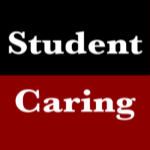As we see colleges and universities struggling to re-open, and stay open, this fall semester, it’s an open question whether language courses in particular can be conducted and, if so, with the same level of interaction and quality. Language courses, after all, typically involve a lot of verbal interaction, something not so healthy in a closed classroom in most parts of the country. The open question is whether institutions of higher learning can take creative approaches to keep the quality and interactivity of language instruction high. We’ll survey what’s being done, and some best practices from around the world.
Are Unis Ready to Teach Language Online in 2020-2021
Around the world, administrators and educators are rethinking how languages can be taught amidst fears of contagion, economic hardship, political uncertainty and social upheaval in many places. There was no textbook in place as to how to prepare for the perfect storm of calamities that have befallen the world. But innovative minds in the fields of language education have come up with some creative solutions to prepare students for new approaches to linguistic learning.
Harvard University has been a pacesetter in this regard. Realizing that in-person classes would be problematic this term, educators at the graduate school set out to create new programs for preparing students for productive language learning. They developed a mini-course for “Online Learning Success” which instructed students in how to learn and thrive using online video conferencing programs like Zoom and Skype, so they could collaborate with other students and interact well with their teachers.
These principles were also applied extensively at Harvard Divinity School, where last summer a longstanding in-person course dealing with ancient languages in which Holy Writ was composed was adapted into an online course. By clever interspersing of the Zoom-based “interface” and screen share technology, the course managed to both connect the students and their instructors while providing improved interactive collaboration with the ancient text. One student remarked that though they were distant “in body” the method enabled them to bond “in spirit.”
How A Translation Agency Can Help Teach Language Online
In this article, we’ve seen ways that remote technologies are changing the language learning industry. Agencies such as FluentU and Tomedes are assisting in online instruction in different ways. The first does so through computer-assisted technologies, while the other does so through translation technologies. Tomedes is a translation agency that has a rigorous language offering. Tomedes’ CMO, William Mamane, is an expert in linguistics, which is why we chose to interview him.
“Since our inception in 2007, we have built a vision that centers around being more than just translators, but rather, creators, language teachers, and more,” said William Mamane, who heads the company’s marketing efforts. “Language teaching is a basic of the translation services industry, and as a leader in that field, with expert linguists at the center of its services, we have been remote-forward before, now, and in the future.”
Schools, colleges and universities which need help adapting their in-person courses simply need to reach out for assistance. Mamane says the primary need is not just for translation itself but guidance on facilitating interaction and collaboration in an online instructional setting. “In many cases, it’s a matter of developing ‘icebreakers’ and enjoyable exercises which ease students into a comfort zone where they are comfortable joining conversations and taking initiative. In a multilingual context that can be challenging. Having native speakers from a translation agency as tutors and teaching assistance fills in gaps and helps instructors spark interaction.”
Can Online Language Learning be Adapted for Colleges and Universities?
Translation agencies can also serve as bridges to help integrate existing online language courses into the classroom context. The market for online language learning is valued at over $9 Billion and expected to grow at an annual clip exceeding 10% in the next seven years, doubling by 2026. The pandemic has spurred growth in this market.
The challenge here is to adapt programs that were initially targeted for individual learners into a classroom context. Many online language programs like Babbel and Duolingo have recognized this potential and are offering free or deeply discounted courses to the universities as well as consultation for integration and adaptation. In effect they are using colleges and universities to market their services and expose their courses to future customers.
Can Automatic Translation Apps Support Online Language Courses and Interlingual Communication?
In recent years, the quality and features of machine language learning applications have advanced by leaps and bounds. Translation agencies and language interpreters recognize both the threat and the opportunities afforded by Artificial Intelligence in the services of translation and interpretation. In the classroom context, educators are coming to grips with the new normal of language instruction by recognizing that each student is already equipped with what amounts to be a personal linguist in their hand.
Especially useful to assist in language courses are three features present in the translation apps offered by Google, Microsoft and others:
- Text-to-text translation and which enable quick understanding of any foreign language passage, so as not to get lost if something is unclear
- Text-to-voice interpretation so the student can hear correct pronunciation and intonation
- Simultaneous voice translation so that students not yet fluent in a language can still communicate to a foreign language speaker
- Camera translation using “augmented reality” which can optically recognize and translate foreign text in images and translate them into a familiar language
In these challenging times, the combination of translation agencies and online language instruction can serve as powerful teaching assistance for remote learning.
###
August 25, 2021

0 Comments